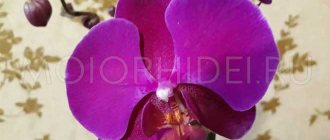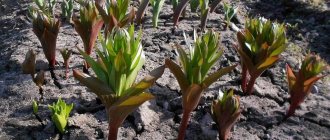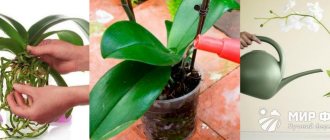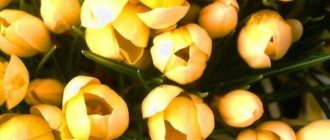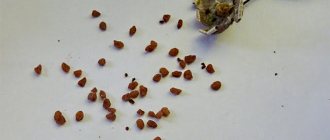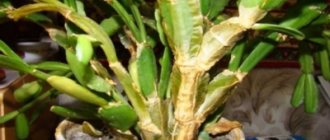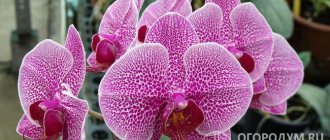Growing petunia in your summer cottage is a fascinating activity. Homemade flowers are always more desirable than purchased or artificial ones. Petunia is not demanding in terms of planting and care, so every gardener can grow a beautiful and healthy flower. One of the popular ways to grow petunias is in pots or flowerpots. They are placed near gazebos and arches and used as elements of landscape design. Caring for flowers consists of watering and fertilizing, pruning and replanting. Let's take a closer look at what it means to care for petunia during flowering in a pot and learn the secrets of experienced flower growers.
Growing conditions
Caring for ampelous petunia is based on standard agricultural technology and implies the following rules:
- lighting at least 12 hours a day, otherwise the plant will form few buds;
- daily watering, on hot days in the morning and evening;
- fertilizing with mineral fertilizers (for flowering plants every 5-7 days);
- pinching shoots at the stage of formation and when the lower part is exposed (2/3 of the length);
- constant removal of fading flowers so that the plant does not waste energy on ripening seeds.
When grown in a perennial crop, in order to preserve petunia until spring, in the fall its shoots are cut off radically, leaving about 10 cm from the ground, after which the pot is placed in a bright room with a temperature of +7...10 ℃. The plant needs to be watered approximately once a week. In the spring, you need to do formative pruning, and then transfer the flower to a larger container with enriched soil.
At home, it is quite difficult to ensure a safe winter for petunias, so many people prefer to acquire new plants at the beginning of the season.
How to achieve abundant flowering?
How to grow petunia at home? The lighting must be excellent, fresh air is required, and the temperature during the period of active growth is maintained within 20 °C. If the balcony faces north, the flowering will not be as intense. For varieties with large flowers, the air temperature should be higher than for small-flowered ones. If containers are placed on open balconies, it is recommended to remove them before rain, as flowering may stop.
Have you decided to do everything correctly? Then it is better to stock up on acidic soil and add a little lime to it. Plus the plant loves good nutrition. Complex fertilizers are suitable for this; they can be bought at flower shops. The intensity of flowering and decorative appearance largely depend on the frequency of fertilizing. During the period of active growth, fertilizers are applied approximately once every 7-10 days. They must contain potassium. What else can I feed petunia with? The plant responds excellently to organic fertilizing. Fresh mullein is great for flower beds, but at home you can get by with complex fertilizing.
If you want to increase the percentage of surviving seedlings, you can add vitamins B1 and B12. They will not be difficult to buy at the pharmacy.
Various fertilizers are used for indoor flowers, but in everything you need to know when to stop. What do experienced gardeners recommend to feed petunias for flowering? In summer, potassium monophosphate can be used as the main and effective fertilizer; just add 15 g per bucket of water. Periodically, 10 g of urea is poured into it. The last component is added no more than once a month. Iron chelate is also needed to prevent chlorosis. If you add it, the leaves will not turn yellow.
If you decide to create a dry stream from stones or other materials at your dacha, then not only hostas and dwarf conifers will help frame its banks, but also petunias will cope with this task perfectly. Laying a rolled lawn will also make the area more presentable if all the work is carried out correctly and do not forget about the timely care of the green lawn.
Description
Ampelous petunia stands out in the world of flower crops with its absolutely unusual colors and unusual-looking peduncles. Having looked at it just once, people will no longer forget what this plant looks like. The length of the shoots can reach 1.2 m. But sometimes it is about 0.3 m. When the plant develops, they fall down in a spectacular manner.
The creeping shape of the stems is not the only advantage of ampelous petunia. The foliage is soft and slightly hairy on top. The older the plant, the larger its leaves. Flowers are found in large numbers. Each shoot axil allows one flower to form. Outwardly, they look more like bells.
Flowers can be milky white, purple, or even more exotic colors. The petals are painted in 2 different colors. The inside of the petal is always brighter and more saturated than its outside. As a result, ampelous petunias form truly unique “living carpets”. But they can be represented even more accurately if they are compared with another variety.
3. Petunia propagation - growing from seeds, cuttings
Seeds sown in spring in loose nutritious soil. You can sow even at the end of winter, but the seedlings will lack light and become elongated and ugly.
For sowing, you can use your own collected seeds . Seed collection is carried out in calm and fine weather.
Ripe seeds are located in dried, brownish seed pods that open easily when touched.
The planting material retains fairly good germination for about 4 years - after that it sharply decreases.
Remember that plants grown from their own seeds often will not inherit the attractive varietal characteristics of the mother bushes.
↑ Up,
Since petunias require long daylight hours for good development, during winter sowing it is necessary to organize artificial lighting with fluorescent or phytolamps.
- To plant, take a plastic container with a lid and place a small drainage layer in the form of fine expanded clay on its bottom.
- A layer of substrate based on peat and river sand with a loose consistency and a sufficient supply of nutrients is poured onto the drainage.
- A small portion of the soil mixture, sifted through a sieve, is poured on top of the soil - it will be loose and it will be easy to allow not only moisture, but also air to reach the plants.
↑ Up, - The substrate for sowing is thoroughly moistened in advance with water at room temperature from a fine spray bottle.
- Sowing is carried out on the surface of the soil, and since the petunia seeds are too small, to distribute them evenly, use a toothpick or mix the seeds with an equal amount of river sand. Of course, it is more convenient to sow pelleted planting material, which can be purchased at a flower shop, but at the slightest drying of the substrate, the germination of such seeds comes to naught.
- For good germination, seeds need light, but not direct sunlight.
- After sowing, the soil is sprayed again and the crops are covered with a transparent plastic cap or glass on top to create a greenhouse effect and maintain a high level of air humidity.
- The seedlings are placed in a well-lit, but shaded place from direct sunlight at a temperature of 22 - 25 degrees Celsius. Seed germination increases when using bottom heating.
↑ Up,
If agricultural techniques are followed, the first shoots should appear after just a week .
Small sprouts should be ventilated daily by lifting the cap and removing condensation from it. If young plants are covered with glass, then it is simply turned the other side.
Gradually, the ventilation time is increased, and with the appearance of the first true leaf, it is removed altogether.
To prevent fungal diseases, at this time the plants are sprinkled with a very thin layer of river sand - it will facilitate better outflow of moisture from the plants after watering.
↑ Up,
Diving is carried out on flowers that already boast 3 - 4 true leaves.
Before diving, the soil is thoroughly moistened and the small sprouts are very carefully transferred into small individual cups, trying not to disturb their delicate root system.
After diving, cups with bushes can be covered for 2 - 3 days with a small piece of non-woven covering material .
↑ Up,
In the first months of life, it is necessary to especially carefully monitor soil moisture and spray the flowers in a timely manner, keeping the soil evenly moist, but not waterlogged.
The first fertilizing with mineral fertilizers with a high nitrogen content should be carried out 10 - 14 days after the dive . For fertilizing, a very weak solution of fertilizers is used, which is applied both directly to the soil during watering and sprayed onto the leaf blades.
The first buds on plants grown from seeds will appear 2.5 - 3 months after the sprouts appear.
↑ Up,
Sowing seeds in snow gives very good results - to do this, collect a small amount of snow and spread it over the surface of the substrate in a container.
The brown seeds will stand out well against the white background and can be spaced evenly. Gradually melting snow will further moisten the crops.
↑ Up,
Sowing seeds can be done in peat tablets - despite their cost, they have proven themselves very well when growing petunia.
Bushes planted in peat tablets do not need to be pricked - seedlings grown in this way can be immediately planted in a permanent place along with the tablet.
↑ Up,
If small bushes stand still for 1 - 2 weeks and show no signs of growth, then there is no need to worry - at this time the roots are simply actively growing .
↑ Up,
Terry and ampel varieties , as well as calibrachoa are propagated by stem cuttings 8 - 10 cm long with 3 - 4 3 - 5 internodes.
The most successful period for rooting is considered to be the end of winter - beginning of spring . When cuttings at other times of the year, plants must be provided with artificial lighting.
- The cuttings are separated from the mother plants using sharp, sterile pruning shears or scissors and all leaves except the top pair are removed.
- To reduce moisture loss, the remaining leaf blades are cut to half their length.
- The bases of the cuttings are dusted with rooting powders.
- Immerse the cuttings in a nutritious, loose, and well-moistened peat-based substrate. As a top layer, you can sprinkle the cuttings with sand or perlite to drain water.
- The top of the cuttings is covered with glass or transparent plastic film and, instead of watering, they are sprayed with a fine sprayer.
- Place the cuttings in a place shaded from sunlight with a temperature of 22 - 25 ° C.
- Every day the cover is removed and the condensation that appears on it is wiped off.
↑ Up,
After 1 - 2 weeks, new leaves and shoots will begin to appear on the cuttings, which means that the rooting process has been successfully completed - at this time the cover can be removed.
A month after new growth appears, the plants can be planted in small pots, pinching off all the stems, leaving 4 to 5 leaves on each.
Repeated diving into slightly larger containers is carried out after another 3 - 4 weeks.
↑ Up,
When to plant petunia seedlings
The main question that concerns, of course, all novice petunia lovers is when to start sowing? There is no definite answer, it all depends on when you want to get flowering and what region you live in, when you will have the opportunity to plant seedlings in open ground or in flowerpots or beds.
Professionals involved in growing seedlings for further trade begin sowing much earlier than amateurs. The first batches are sown already in January, because for sale a flowering petunia is required so that you can see what color and size the flowers are. For such early sowings, additional certain conditions must be created. Shelving, lighting, for keeping later blooming adult petunias, or a heated greenhouse.
Petunia Doll or Baby Doll, Petunia Baby Doll
For lovers who have a small number of flowers, you can get everything much simpler. If you want to plant your Petunia in bloom in early May, that is, very early, then in the second half of February you need to start sowing. Experienced gardeners recommend starting to sow petunia in March. Again, depending on the regions, either in the first decade or in the second. Then your seedlings will bloom at the traditional time: at the end of May or at the beginning of June, when it will be possible to plant them in open ground. And then growing petunia seedlings will not cause you much trouble. It won’t outgrow yours and won’t bloom at home. And it will bloom exactly where it is needed - outside.
When to sow petunia, everyone decides individually, but if you want to see flowering on time, then before mid-March, the seeds already need to be sown, regardless of the region. If you sow later, then flowering will begin very late, and if someone has a short summer, then a lot will die during frosts, flowering will begin and there we already have frosts. You can sow in absolutely any plastic container.
Simple varieties of petunia, which are not hybrids, are always considered easier to grow and their seeds have greater germination.
How to make a pot with your own hands at home
The annual purchase of new vessels is easily replaced by self-made containers. Pots can be made from simple materials.
Available materials
To create the product you use:
- gypsum;
- concrete;
- tree;
- clay base.
Some craftsmen prefer to use brushwood or vines.
Important! Old buckets, jars, and plastic containers are suitable as a base.
Making containers from gypsum
List of components
Depending on the option chosen, you may additionally need:
- water - for products made of gypsum, concrete and clay;
- varnish - to protect wood from moisture;
- quick fix adhesive.
When weaving containers, strong twine, burlap and a plastic base are used.
Growing petunias by sowing in open ground
Sometimes, in regions with a mild climate, a much simpler method of growing petunias from seeds is used - sowing directly into the soil at the place of cultivation. Sowing in April allows you to get plants that bloom in mid-summer. This method is used mainly for small-flowered varieties of petunias, which are grown as a ground cover or border plant. In regions with harsh winters, it is possible to sow seedlings in greenhouses and greenhouses, but flowering will still be late.
Cuttings of petunia seedlings. Brittney SmartPlanting petunia cuttings. Brittney SmartRooting petunia cuttings. Brittney Smart
Soil, pots and fertilizers
This plant consumes mineral fertilizers in large quantities. In principle, you are unlikely to be able to overfeed it when fertilizing, but you need to know that fertilizing should be based on potassium. Peat and humus are also added, but you need to be careful with them so as not to burn the root system. Fertilizer is applied no more than twice a month.
Absolutely any pots can be used, it does not matter whether it is clay or plastic.
The shape also doesn’t matter, the main thing is that there is enough space for it. In addition, it is necessary to provide a drainage system so that water does not stagnate in the root system, otherwise the root will simply rot.
The soil is also important. The soil must be loose, moisture-absorbing, well-permeable to air, and nutritional content is also necessary. The following soil composition can be recommended:
home-ideas.ru
Hardening off petunia seedlings
After the first leaves appear and pick, I begin hardening off the petunia seedlings; to do this, once a day I lower the temperature in the room for 10-15 minutes by opening the windows. In this case, plants should not be exposed to frostbite by cold winds. Do not allow plants to stand on the windowsill during ventilation, as they may die.
The air temperature in the room should drop, not the plant itself and the ground as a whole. Every day I increase the time the room is ventilated. This method promotes good development of the petunia root system and strengthening of the above-ground part of the plant.
When the plant develops 3-4 true leaves, I begin foliar feeding. I spray petunia seedlings alternately every 2-3 days with fertilizers and stimulants. This allows me to have a well-developed plant at the time of planting, with the central trunk already clearly visible.
How to replant correctly
If you decide to replant a flower, then you need to do it in a cool time of day, that is, it should be evening or cloudy weather, and it doesn’t matter whether you do it in the garden or at home in a pot.
Before planting, it is necessary to water thoroughly so that you do not damage the roots. The transfer of seedlings should be done very carefully, since parts of the root may fall along with the earthen ball, disturbing the root system. After the replanting process, do not forget about re-watering.
The soil around the petunia should be fertilized with humus or peat, simply sprinkling it in a small layer on top of the ground.
In order for the flower to give joy with its luxurious and long blooms, it is necessary to pinch the petunia. Simply put, you need to remove excess shoots, which take all the beneficial substances for their growth, preventing the flowers from growing fully. Plucking occurs approximately 2-3 times a month when flowering occurs and once every few months when flowering does not occur.
How to form an ampelous petunia in a flowerpot outdoors
To form a beautiful, blooming, lush and healthy bush, you need to perform the following steps:
- after the true third pair of leaves appears on the seedlings, the crown of the shoot is removed, only two leaves should remain;
- the second removal of the growing point is carried out after the appearance of several lateral shoots;
- It is recommended that the third and fourth pinching be carried out at intervals of thirty days; the guideline will be the new side shoots that have grown and are peeking over the edge of the pot.
Due to such radical actions, the flowering period may be a little late, but the formed bush will look its best.
Soil and microclimate
Heat-loving flowers begin to be planted after the onset of stable heat. The flower loves windless, sunny places, but tolerates light temporary partial shade well.
Alkaline and strongly acidic soil reactions negatively affect the well-being of the plant. The flower is indifferent to the rest, if they are sufficiently nutritious, moderately loose, retain moisture well, but do not allow water to stagnate.
Petunia
In order for garden petunia to be lush and blooming, it is planted in loamy or sandy loam soil fertilized with humus and compost. Increased acidity of the earth is neutralized with lime.
The correct soil composition is sand, peat, humus.
Varieties and varieties of balcony petunia
Petunia for growing on the balcony is represented by three types:
- bush
- ampel;
- cascading.
Balcony petunia is cultivated in several varieties:
Miniature - reaches a maximum height of 25 centimeters. Has many small flowers. Unpretentious, easily tolerates both high humidity and heat.
Miniature
Large-flowered - reaches a height of 50 centimeters. Flowers in diameter are up to 12 centimeters, double and ordinary. Conventional plants propagate by seeds and cuttings. Terry - only by cuttings.
Large-flowered
Ampelous is a climbing plant with long thin stems and large flowers. Hanging down, petunia forms beautiful, bright garlands.
Ampelnaya
- Ampelous miniature is the most capricious type of petunia. Thin and fragile stems break from wind and rain. Not suitable for open balconies. Propagated only by cuttings.
- Cascading - at the beginning of growth, the flower stretches upward; Having reached the required point, it diverges to the sides, going down in a cascade. Medium size flowers. Propagated by cuttings and seeds.
Cascade
Multi-flowered - this is a low plant, reaching a height of up to 30 centimeters, pleasing to the eye with a huge number of small flowers. It tolerates any bad weather well. It reproduces in two ways.
Multiflora
Tips for decorating a balcony
When decorating a balcony with flowers, you need to make sure that they do not block the light from each other and are in harmony with the overall decoration. Containers with tall plants are placed on the floor in the corners, as well as along the wall. Low-growing and hanging ones can be placed on special shelves attached to the wall.
Pots with hanging vines are hung at different levels.
For climbing plants, trellises are often used.
It is best to place ampelous and cascading petunias in containers outside the balcony, securing them securely. Bush miniature plants are placed on a special table or stools.
Thanks to the abundance of colors, petunia can be successfully combined with each other, as well as beautifully combined with other plants.
Types of petunias
The petunias that flower lovers now grow are hybrids that have adapted to the place where they grew for a long time. Plants adapt to changing environmental conditions and are constantly changing, so the likelihood of finding a “pure” petunia is close to zero.
Until the mid-19th century, the following petunias were grown:
- white;
- violet-red.
White petunias
Nowadays, this flower can be divided into the following types:
- petunia, which has impressive palm-sized flowers. Flower growth is very fast. Examples: Limbo, Hit Parade;
- petunia, whose flowers are quite small, about five centimeters, but at the same time there are quite a lot of them, they smell nice. This plant is more suitable for the garden, as it is an ideal addition to the flower bed. These are Multiflora and Merlin;
- small petunias, which are also usually grown in the garden along with larger petunias. Another name for such plants is dwarf. Examples: Duo Maxside, Merlin;
- ampelous petunia is a name that unites cascading plants, their flowers look down. They feel best in hanging containers. Famous varieties are Surfinia, Pirate, Avalanche;
- cascading petunia, which is usually grown as arbor shelters or for hedges. This petunia looks good on a terrace or veranda. The shoots grow in complete disorder, forming hanging thickets. These are Cherry, Ramblin, Silver, Typhoon, Rose;
- Flowers have also been bred that are not afraid of unfavorable weather conditions. They have many flowers of moderate size. Examples: double Floribunda, Sonya, Celebrity.
Petunia Dormouse
How to water petunia? First, a little about the plant itself
This plant is a perennial herbaceous flower or subshrub. There lived a scientist in France who very often went on various scientific expeditions. And then one day, while near South America, he found a very beautiful plant, he was attracted by the flower itself.
The plant had a peculiarity in that its foliage was similar to the foliage of a tobacco plant, which is why he named it Nicotiana.
After 15 years had passed, many plants were found that were similar to Nicotiana. Therefore, plant breeders decided to create a new genus of plant, which was named Petunia.
Sprout care
During the period from seed germination to the moment of transplantation to a permanent place, ampelous petunia needs to comply with the rules of lighting, watering, fertilizing, temperature conditions, and picking.
Lighting requirements
Petunia needs long daylight hours. When planting in March, no additional lighting is required. Twelve-hour daylight hours will provide young plants with sufficient light.
When growing in winter, you need to install additional light sources.
Optimal temperature conditions
For seedlings to emerge, a temperature of 25–30 degrees Celsius is created for 2 weeks after sowing. During this period, it is necessary to ventilate the container daily. Subsequently, the temperature is reduced to 20–22 degrees.
How to water?
You cannot miss the moment when the seedlings begin to dry out. At the first signs, water the plants and remove the glass.
It is important to maintain regular watering. This will protect the seedlings from diseases
Watering is carried out at the root. Do not allow water to get on the leaves and stems. For the convenience of the procedure, a medical syringe is suitable.
Application of fertilizing
Ampelous petunias love fertilizers and minerals. For good growth, fertilizing is done three times:
- Before planting the seeds. Fertilize the soil with a fungicide (10 g of phytosporin or 5 g of copper sulfate per 10 liters of water).
- Immunostimulating feeding before picking. “Epin”, “Zircon” or HB-101 will help tender seedlings better withstand unfavorable external conditions (lighting, temperature, humidity). To prepare the nutritional mixture, take 0.25 mg of Epin, or 4 drops of Zircon, or 1 drop of HB-101 per 1 liter of water.
- After picking the seedlings. When replanting, pour universal or fluoride-containing fertilizer under the root. A week later, nitrogen mixtures are sprayed onto the foliage.
Terms and rules of diving
You can start planting young plants after 2–4 pairs of true leaves appear.
Important! In case of dense shoots, replanting in the phase of 3–4 true leaves is permissible. The container for seating must be at least 6 cm in height and 4–6 cm in diameter
A good option would be disposable plastic cups.
The container for seating should be at least 6 cm in height and 4–6 cm in diameter. Disposable plastic cups are a good option.
Algorithm for replanting ampelous petunia:
- 2–4 hours before starting work, moisten the soil with warm water.
- Fill the prepared container 2/3 with soil and water.
- Make planting holes in the middle.
- Carefully remove the plant with a lump of earth and lower it into the prepared hole.
- You need to dig down to the cotyledons, compacting the soil around the stem.
The video about picking ampelous petunia is described:
Breeding rules
Typically, seeds are used for planting, and the cutting method is used for terry varieties. When choosing any propagation method, it is important to remember that seedlings need bright and abundant light. It is recommended to start sowing in March; phytolamps are used for additional lighting.
An equally important factor is the quality of the soil. Only light and loose soil is suitable for planting seeds. The humidity should not be too high. The top layer of soil is pre-sifted so that the seeds are more convenient to distribute and they germinate faster. It is best to pre-mix them with dry sifted sand, then pour the mixture onto moist soil in a container. After this, the soil is sprayed with water again, and the container is covered with a piece of glass. As a result, the conditions of a home greenhouse are created.
Spraying is carried out every day along with ventilation, the container is turned to the light in different directions. It is worth remembering that the plant loves moisture, but does not tolerate high humidity well.
As soon as the first leaves appear, it is necessary to remove the glass, reduce watering, and dive. If the seedlings have stretched out and the stems have become thin, then they are picked again, carefully sprinkled with sand. Planting seedlings in a permanent place is carried out on cloudy days. The soil is carefully watered and mulch of humus or peat is laid out. The first flowering begins in small-flowered varieties approximately 2.5 months after planting, in large-flowered varieties - 2 weeks later.
Petunia cuttings are not carried out very often. This method is suitable for terry varieties. How to do this job correctly? Future cuttings must be carefully cut from the mother plant, and then kept all winter in excellent light and an air temperature of 10-12°C. Suitable for planting workpieces with 2 internodes. Flowers and buds, if any, are necessarily cut off. The tip of the cutting is sprinkled with root. The blanks take root quickly, after which they can be transplanted into permanent pots, the size of which does not exceed 9 cm. If cuttings are carried out in November, then flowering can be expected in April.
How many seedlings should there be in one container? Their number depends on the size of the container and the selected variety. For large ones, you will need spacious flowerpots so that the decorative creature has the opportunity to demonstrate all its beauty. For example, Fortunia is planted 2 pieces in a 10-liter container, and Typhoon - 1 seedling in a 10-15 liter pot.
How to properly care for seedlings
The air temperature in the room for growing seedlings should be 20-22 degrees. You need as much light as possible (ideally backlighting during the day). The substrate must be constantly moist, but water stagnation should not be allowed. Condensation on the lid or film must be wiped off daily. In addition, you need to take care of hardening the sprouts. To do this, after sprouting, remove the lid for 10 minutes every day. Gradually, the ventilation time increases. You can completely remove the lid or film after all the sprouts have acquired real leaves.
Feeding is not necessary in the first stages, but you can strengthen the immunity of seedlings by adding Epin to the water for spraying (a few drops per spray bottle).
In individual containers it will be more convenient for the plant to develop, it will grow healthier
You can start picking seedlings when their height reaches 4-5 centimeters. Using a narrow knife, remove each sprout, pinching the root at a depth of about three centimeters. After this, each sprout is planted in an individual container.
The main problem that can be encountered when growing petunia seedlings is excessive elongation of sprouts due to lack of light. You can cope with this problem by picking, burying the seedlings in the soil up to the cotyledon leaves.
In individual containers it will be more convenient for the plant to develop, it will grow healthier, and it will be easier for you to transplant seedlings into open ground. When picking, deepen the seedling to the first true leaves so that a good root system is formed and the likelihood of the shoots being damaged by the “black leg” is reduced.
Useful tips for growing seedlings
In order for healthy, beautiful petunia to grow from seeds, the cultivation of sprouts must be accompanied by regular, careful watering. When the soil dries out, the plants will die, and overmoistening will lead to the appearance of a “black leg”, and as a result, to the rotting and death of small seedlings
Frail seedlings should be carefully watered at the root
Fertilizing is applied two weeks after picking the plants.
To harden a young plant, already from the second week, open the window for 10 minutes, thereby lowering the air temperature in the room. However, the sprouts must be protected from drafts and direct flow of cold air; the temperature of the seedlings themselves should not drop.
Video about growing petunia seedlings with your own hands
Fertilizing is applied two weeks after picking the plants. At first, only spray the leaves with fertilizer every two days, alternately changing growth stimulants and complex mineral fertilizers containing nitrogen. In the future, you can add root feeding. Important little things
- sprouts need light almost around the clock; you will need to provide not only daytime supplementary lighting for seedlings in gloomy weather, but also leave dim light at night;
- do not allow a crust to form on the ground, otherwise the seedlings will suffocate;
- when the roots of the plant fill the entire clod of earth, transplant the petunia into a larger container;
- if you notice that the seedlings are too long, add a little soil mixture;
- To grow expensive and rare varieties, use peat tablets.
At first, petunia will grow quite slowly, do not worry - the plants are forming a root system. After about 1.5 months, the above-ground part will develop no less actively.
If your petunia is damaged by water
How to feed lilies during flowering
Heat-loving petunia tolerates short-term coolness well, but if the drop in temperature coincides with prolonged rains, the plant has problems.
Being in constant dampness, the roots run the risk of developing black rot, growth and flowering stop, and the inflorescences begin to rot.
Reanimation of petunia after waterlogging
Terry varieties suffer the most from rain. And if it is not possible to move them to a shelter, then you should know how to revive a petunia.
Remove rot
Restoration measures begin with the initial removal of all rotten elements. At the same time, a check is carried out for the presence of slugs, which always appear during the rainy season. If pests are detected, treatment is carried out with Epin.
What to do if the rains flooded the petunia? Urgently loosen the soil to improve drainage and add Glyocladin tablets, which will strengthen the roots.
Increased flowering after rains
Rains wash away all previously applied fertilizing and the flower suffers from lack of nutrition. Flowers become smaller or even fall off altogether.
Rainy weather
During this period, the crop is in dire need of feeding. The full complex should be added, containing the necessary microelements. And be sure to remove the damaged parts and loosen them.
Petunia restoration
Flowers often remain with holes after rain. The leaves of the plant also suffer.
Without regret, you should remove all damaged parts, even if you have to cut off the lashes. After a short time, flowering will resume and new shoots will grow. It is only necessary to support the crop with mineral fertilizers.
Transplanting petunia into a pot
Petunia is a perennial plant, but it is not adapted to wintering and will die from exposure to snow and low temperatures. That is why, at the end of the summer season, it should be transplanted into a beautiful flowerpot and cared for at home. In this way, you will not only extend the life of your petunia, but also decorate your home with a beautiful flower that will remind you of wonderful summer days. The bright foliage will delight you throughout the winter, and in the spring you will be able to plant the bush again in its usual place.
To make petunia happy longer, you can transplant it into pots and bring it home
Let's look at some basic care tips that will help you grow a healthy and lush plant.
How many petunias should I plant in a pot?
Experts do not advise planting more than two plants in pots at the same time. But this rule is only true if you are planting strong seedlings with a powerful root system. Otherwise, you can play it safe and plant 3-4 seedlings in a pot, and then, if necessary, thin them out. As a rule, the manufacturer indicates planting recommendations on the seed package, because this issue largely depends on the variety you choose. For example, terry petunia has large, lush buds, and therefore requires more space than small-flowered ones. Most often, 1-2 bushes are placed in a spacious pot.
What kind of pot is needed for petunia
It all depends on the hybrid you choose. For example, ampelous and cascading varieties are placed in flower pots with a volume of approximately 5 liters. Pots for terry varieties are selected at the rate of 3 liters per bush. Ordinary petunias do not need a lot of free space, so they can be planted more densely, for example, 3 bushes in a 5-liter container. Resourceful gardeners and housewives even use plastic buckets for mayonnaise or paint as flowerpots. Several holes are made in the bottom of the container to prevent liquid from stagnating, a layer of thin foam rubber is laid and the plant is planted in it. If you decorate the bucket or wrap it in gift wrapping paper, it will take on a beautiful, elegant look. The growth and flowering of petunia does not depend on the material from which the pot is made, so you can safely use products made of clay, wood or plastic.
Stages of planting ampelous petunia
Rules for growing petunias in pots and cache-pots
In order for the flower to feel comfortable and grow well, it is necessary to fertilize with complex fertilizers at least once every two weeks. After planting in a flower pot, the bush should be trimmed thoroughly, not sparing the bright foliage. The length of the cut shoots should not exceed 5-7 centimeters from the root. Don’t worry, petunia will grow very quickly, becoming larger and more beautiful. Provide regular and timely watering, but try not to overdo it with moisture so that the roots of the plant are not affected by rot. Spraying with clean, settled water at room temperature will help saturate the foliage with moisture.
About the flower
Petunia is a perennial plant belonging to the nightshade family. The height of the plant varies from ten to one hundred centimeters. The flower's homeland is South America, but its main habitat is Brazil. The flower mostly loves warm, temperate climates, although there is one variety that grows in the rather difficult conditions of North America. Today there are about forty species of these plants in the world.
Most of them, since the 18th century, have been grown as decorative balcony and garden plants. Mostly ampelous petunia is grown in pots. Due to the large and fairly bright flowers that have a variety of colors, the plant has become very popular among many gardeners around the world.
The popularity of this plant is so high that an asteroid was named after it, which was discovered in 1921.
What varieties are best to plant?
You can plant any varieties of petunias in flower pots, but the following varieties of ampelous and semi-ampeloid petunias are most suitable:
Surfinia
Particularly loved by Russian flower growers. Characterized by a variety of colors, resistance to natural phenomena, lush flowering, and rapid growth.
Catherine
Hybrid variety (the variety of hybrid varieties of petunia is described here). Stem length up to 80 cm. Flowers of rich colors: bright pink or pink-red with veins. The diameter of the flower is 6–7 cm. It blooms luxuriantly.
Explorer
The variety has very long, strong stems up to 150 cm. The plant is very hardy. The flowers are large and waxy. The colors of the flowers of this variety can be very different.
A relatively new variety of ampelous petunias. The buds are large, up to 8 cm, velvety, beautiful black.
The stem length is approximately 1 m. Plants of the variety have bright red, medium-sized flowers. Dense flowering is also characteristic.
Mashenka
The stem length is 70–80 cm. The flowers are small, funnel-shaped, 3-5 cm, dense blooms, pink in color with a yellowish center.
Wonderwave or Fortunia
Also a very popular variety in our country. The length of the shoots is from 1 to 1.5 meters. The diameter of the flower is 5–7 cm. Flowers can be of different colors.
Diseases characteristic of petunias
If you properly and scrupulously care for your flower, most likely it will not get sick. However, sometimes you can encounter a disease such as blackleg. The plant suffers from it due to excessive fluid intake or due to crowding of flowers in the pot. For treatment, it is necessary to remove diseased specimens with a large amount of soil from the general container. Nearby flowers need to be treated with fungicides.
Blackleg
Petunia can also get powdery mildew. This problem can occur in a flower that is constantly exposed to changes in temperature and air humidity.
Powdery mildew
What can harm?
Flower cascades
How to organize care for petunias in a pot? It is important to protect the plant from pests and various diseases. Although this creature is hardy, it loves care. If the rules are systematically violated, then you won’t have to wait long for pest attacks.
Excessive watering can lead to loss of decorativeness. With excessive moisture, black leg and root rot appear. It is easy to identify such diseases externally. At the root part, the stem becomes soft and brown, and the plant itself turns yellow. If the disease has not gone too far, then it is necessary to transplant your pet by removing the affected part. Treatment with fungicides is mandatory, watering is limited until the plant recovers.
Powdery mildew is also an insidious guest. How to detect her tricks? A whitish coating appears on the leaves. Powdery mildew appears when there are sudden changes in temperature and high humidity levels. All affected parts must be removed immediately and then treated with sulfur. Pests include aphids, mites, and whiteflies. It is not so difficult to fight them; it is enough to purchase insecticides and carry out the treatment.
Growing and caring for petunia is not that difficult. It is distinguished not only by its beautiful appearance, but also by its abundant flowering. When breeding, special attention will have to be paid to feeding and breeding rules. Otherwise there are no difficulties.
krokusy.ru
Ampelous petunia: subtleties of care
Caring for ampelous petunia consists of timely watering, spraying in hot weather, fertilizing and removing broken and faded shoots. Plants can be attacked by pests, and diseases often develop under unfavorable growing conditions.
We’ll talk about the regime of fertilizing and treatment of diseased petunias later, but now it’s important to focus on pinching the shoots
Spray and feed the plant regularly
For a hanging plant, it is very useful when the bush grows wide, forming many branching shoots. Thus, the number of flowers increases and the decorativeness of the entire plant increases.
Advice! You can start pinching on young plants, removing all growth points on emerging shoots.
Long shoots of ampelous petunia are often damaged by wind and precipitation, so sanitary pruning of plants should be carried out as necessary - this will increase the decorative effect of hanging flowerpots and stimulate vigorous flowering.
Seed pods that have set in, which spoil the appearance of flowering bushes, are periodically removed from petunia bushes.
Why isn't this happening?
If petunia does not bloom by the expected date, it is recommended to pay attention to the following conditions:
- Pot volume and distance between plants. Remember that petunia is a plant with a powerful root system, so at least two liters are needed under each plant. Tip: It is recommended to thin out or replant petunias.
- Insufficient soil moisture. Petunias love plenty of water, but you don’t need to water them often, otherwise the root system may rot. Adjust watering according to the age of the plant. Young petunias cannot be watered abundantly, as their root system has not fully developed.
- Insufficient lighting level. Petunias are light-loving plants, which means it is recommended to choose the brightest and sunny areas for them. Open sun rays can damage the leaves of the plant, so make sure the plants are sufficiently hydrated.
- Lack of feeding or incorrect feeding schedule. What to feed a flower to bloom abundantly? In order to develop, plants require nitrogen fertilizers, and in order to bloom, they require phosphorus and potassium fertilizers. Therefore, the following scheme is optimal: first you need to water the plants, then add a sufficient amount of organic or mineral fertilizers, then water again and add mineral fertilizer for the leaves. Be mindful of frequency. It is not recommended to exceed the required volumes of watering or fertilizing.
- Appearance of the plant. In order for the plant to bloom profusely, it is recommended to pinch the top, leaving five leaves. This method will stimulate the development of additional shoots. In addition, it is necessary to regularly remove faded flowers, as this will become a stimulating factor for a new round of flowering.
Knowing and applying tips for growing petunias, you can achieve long and abundant flowering, and this will undoubtedly lift the spirits of you and your loved ones.
How to properly pick petunia seedlings - step-by-step instructions
Planting petunia seedlings at home involves providing the plant with a larger area of nutrition, and you need to prepare for this in advance.
- Make your own or buy nutrient soil at the store.
- Carry out preventive treatment of the soil mixture against diseases and pests.
- Prepare separate cups, plastic cassettes or larger boxes. Wash with hot water and soap or an aqueous solution of potassium permanganate. All containers must be equipped with drainage holes.
- On the eve of the dive, water the petunia seedlings.
The picking process itself should not cause difficulties for the grower. All that is required of him is accuracy and patience, especially if the petunia seedlings are thickened.
Picking from general containers into cups
Fill cups or other containers with soil mixture, compact them slightly so that 0.5-1 cm remains to the edges. Using a blunt peg, 1-2 cm in diameter, make indentations in the center of the planting container. Pour in a small amount of water. Carefully, using a teaspoon or a flat ice cream stick, remove the sprouts from the general container, holding them by the cotyledon leaf. We transfer the plant to a new container, keeping the earthen lump on the roots if possible. Place the sprout in the recesses up to the lower leaf plates
Carefully fill the voids around the stem and water a little.
Transplanting petunias grown in individual containers looks somewhat different.
Picking petunias after germination from peat tablets
Growing petunia seedlings in peat tablets is very convenient. This is especially true for expensive varieties and seeds in granules.
For sowing petunias, tablets with a diameter of 3-4 cm, which are pre-soaked in warm water, are suitable. After saturation with moisture, the tablets turn into small barrels, about 5-6 cm high. The diameter does not increase, because it is held back by a special mesh.
If the seeds are coated, then they are laid out one at a time in special recesses and sprinkled with water to destroy the shell.
Regular seeds are attached with a toothpick so that there are no more than 3-4 grains in one barrel.
Single petunia sprouts experience virtually no stress during transplantation. You just need to trim the mesh at the base and along the edges so that the plant can grow roots beyond the allotted volume of the peat tablet.
Pour a little prepared substrate into a glass and place the barrel so that the cotyledon leaves are above the level of the planting container. Fill the voids around the barrel with petunia with the same soil, lightly compact and water.
On peat tablets with several sprouts, the mesh is carefully cut along its entire height. Then they open it and select the sprouts one by one along with part of the peat. Further actions are similar to transplanting from a common seedling box.
Transshipment of petunia seedlings
Petunia seedlings often require double picking. This applies to a greater extent to seedlings from early sowings. If the first transplantation of tiny sprouts can be carried out in 150-200 ml cups, then after some time the roots will entwine the entire earthen lump and the development of the plant will stop. But there is still a long way to go before planting seedlings in open ground. This is where the method of transferring petunias into a larger container comes in handy.
- Moisten the soil in the containers with the flowers you are going to replant.
- Take a pot, cut-off juice box or other accessible container with a volume of at least 0.5 liters.
- Provide drainage holes and add a layer of expanded clay 1 cm thick.
- Place a little nutrient soil on top of the drainage, taking into account the height of the earthen ball of the transplanted plant.
- Holding the flower by the stem at the very base, turn the container over and remove it along with the earthen lump, lightly pressing on the walls.
- Place the flower in a new container and fill the voids with the existing nutrient soil mixture.
- Compact the soil around the perimeter of the pot and water.
After a short time, the roots will feel free, and the petunia will continue its development with renewed vigor.
Basic work
When growing petunias, the following work must be done:
Lighting
Petunia does not require special care. She only needs good lighting or backlighting. This is the most important thing for good flower development. Lighting can be provided by sunlight or lamps.
Sanitary pruning
You should also clean the plant from parts that have already bloomed or dried out. Such small pruning stimulates the growth of the plant, as well as its proper development.
Topping
Pinching is also carried out. It should be done approximately 5-6 internodes, as it promotes the appearance of new shoots. Pruning or shortening long shoots is necessary to shape the bush so that it is round and fluffy. Produced only at the discretion of the gardener.
How to water petunia
Petunia must be watered. This flower loves moisture very much, so it needs to be watered at the root, once or twice a day. In order not to flood the plant, you need to install a drainage system in a hole or in a pot, depending on where it grows.
Ordinary stones can also serve as drainage. In the absence of a drainage system, the soil will begin to acidify and moisture will begin to stagnate. This will all have a very bad effect on the plant. Since the root system may begin to rot and the petunia will die.
Fertilizer
Fertilizing should not be applied to the plant's soil carefully. It can be safely fed with various fertilizers. All fertilizers will have a good effect on it. It is worth considering that when petunia is in the growing season or during the formation of flowers, it will be necessary to frequently fertilize the soil. After all, during such periods she needs them most.
Note: Any fertilizer can be added to the soil, except organic fertilizers.
Petunia planting dates
As a rule, it is recommended to sow petunia very early. In the month of February, and best of all, right in January. This method is good for experienced gardeners or those who grow seedlings for sale, so that in April they will already be blooming on the counter. But with petunia you’ll have a lot of fun while you’re growing it, watering it, picking it. Why complicate your life and add more light to the seedlings? And when sowing in the early stages, it is necessary to keep the young shoots under the lamp for three days, without turning them off! And then it is necessary to add additional lighting.
I didn’t sign up for such feats, so I always sow petunia in mid-March, and in 10 days I’ll start sowing. Let it bloom in June, not April - this is very good, because then it will bloom constantly until the cold weather! As a rule, it takes about three months to grow seedlings; in June they can be planted outside. Otherwise, in the Urals, frosts can strike in the beginning and middle of June, but petunia does not like frosts - they may die. And the overgrown seedlings will stretch out on the window and wither—only tears.
